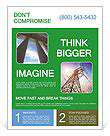How to Ask for a Raise [Tips & Script]
Preparing Your Case: Building a Strong Argument for a Pay Increase
Understanding Your Value Proposition
The foundation of any successful pay raise request lies in clearly articulating your unique contributions to the organization. Take time to reflect on specific instances where your work directly benefited the company's objectives. Rather than simply listing job duties, focus on measurable outcomes. Did your marketing campaign boost website traffic by 30%? Perhaps your process improvements saved the department 15 hours per week? These concrete examples carry far more weight than generic descriptions of responsibilities.
When documenting achievements, use action-oriented language that emphasizes results. For instance, instead of Handled customer service inquiries, try Resolved 95% of customer complaints within 24 hours, improving satisfaction scores by 18 points on our quarterly survey. This approach demonstrates tangible value that's harder to dispute.
Researching Industry Standards and Salary Ranges
Arm yourself with current compensation data from multiple reliable sources before scheduling that important conversation. While platforms like Glassdoor provide helpful benchmarks, consider supplementing this with information from professional associations in your field. Many industries publish annual salary surveys that offer detailed breakdowns by experience level, location, and company size.
Remember that compensation extends beyond base salary. Factor in bonuses, stock options, retirement contributions, and other benefits when comparing packages. This comprehensive view ensures you're evaluating total compensation rather than just one component.
Highlighting Key Performance Indicators (KPIs)
Identify 3-5 metrics that best represent your impact on organizational success. These might include:- Revenue growth attributable to your projects- Cost reductions from process improvements- Quality metrics like defect rates or customer satisfaction scores- Efficiency gains measured in time or resource savings
Present these KPIs visually when possible, using simple charts or graphs that make your contributions immediately apparent. Visual data tends to be more memorable and convincing than text alone.
Identifying Areas for Growth and Improvement
Demonstrate your long-term value by mapping out a professional development plan. Outline specific skills you're working to acquire and how these will benefit the organization. For example: By completing the advanced data analysis certification, I'll be able to automate our monthly reporting, saving 20 hours of manual work each month.
Propose concrete ways you can expand your responsibilities to justify increased compensation. This might involve mentoring junior staff, leading cross-functional initiatives, or taking ownership of underperforming areas that need improvement.
Crafting a Professional and Concise Proposal
Structure your request as a brief business case (1-2 pages maximum) with these key sections:1. Summary of current responsibilities2. Quantified achievements since last review3. Market compensation data for your role4. Specific raise request with effective date5. Future value proposition
Practice delivering your proposal conversationally until it sounds natural rather than rehearsed. The goal is to have a productive dialogue, not deliver a monologue.
Addressing Potential Objections and Concerns
Prepare thoughtful responses to common pushbacks like budget constraints or timing issues. For example, if told We can't afford raises right now, you might respond: I understand the financial challenges. Would you be open to revisiting this in 3 months? In the meantime, I'd appreciate your thoughts on what metrics would demonstrate I've earned an increase when budgets allow.
Always maintain a collaborative tone focused on finding mutually beneficial solutions rather than making demands.
Crafting Your Request: A Script for a Successful Conversation
Understanding Your Needs
Before initiating the salary discussion, clarify your minimum acceptable increase and ideal target. This preparation prevents awkward hesitation if asked directly about your expectations. Consider creating a simple spreadsheet comparing:- Your current total compensation- Market rates for your position- The value of your contributions- Cost of living adjustments
Identifying Your Value Proposition
Frame your achievements as solutions to business challenges rather than personal accomplishments. For example: When we were struggling with client retention, I developed the new onboarding process that reduced first-year churn by 22% carries more weight than I created a client onboarding program.
Structuring Your Request
Use this proven three-part structure:1. Appreciation: I've really enjoyed contributing to our team's success this year...2. Evidence: In particular, the workflow system I implemented has saved an average of...3. Request: Based on these contributions and market data, I'm requesting...
Preparing for Objections
Develop contingency plans for various responses. If met with resistance, you might:- Propose a performance-based bonus structure- Request additional benefits like flexible hours- Suggest a 6-month review with specific milestones
Maintaining a Professional and Positive Tone
Remember that salary discussions are normal business conversations, not confrontations. Use phrases like:- I'd appreciate your perspective on...- How might we bridge the gap between...- What would need to happen for us to...
Handling Potential Objections: Navigating Roadblocks to a Raise
Understanding Common Objections
Prepare for these frequent concerns:- The budget is tight right now- We typically only give raises during annual reviews- Your salary is already competitive- We need to see more leadership from you
Preparing Your Case for a Raise
Create an evidence file containing:- Copies of positive performance reviews- Thank-you notes from clients/colleagues- Before-and-after metrics for your projects- Relevant market salary reports
Addressing Objections Directly and Professionally
Use the Feel-Felt-Found technique:- I understand how you feel - many managers are cautious about raises in this economy.- Others have felt similarly, which is why I prepared this compensation analysis.- What we've found is that retaining top performers actually reduces costs long-term by...
Negotiating a Fair Salary Increase
Consider the entire compensation package:- Base salary- Bonus potential- Retirement contributions- Professional development funds- Flexible work arrangements- Additional vacation time
Following Up and Maintaining a Professional Relationship

Initial Follow-up Strategies
Send a concise thank-you email within 24 hours summarizing key discussion points and next steps. This demonstrates professionalism and keeps the conversation moving forward.
Proactive Communication
If your request was deferred, suggest establishing specific performance metrics that would justify reconsideration in 3-6 months. This shows initiative while respecting the decision.
Building Rapport and Trust
Continue delivering exceptional work regardless of the outcome. Your consistent performance will strengthen your case for future consideration.











